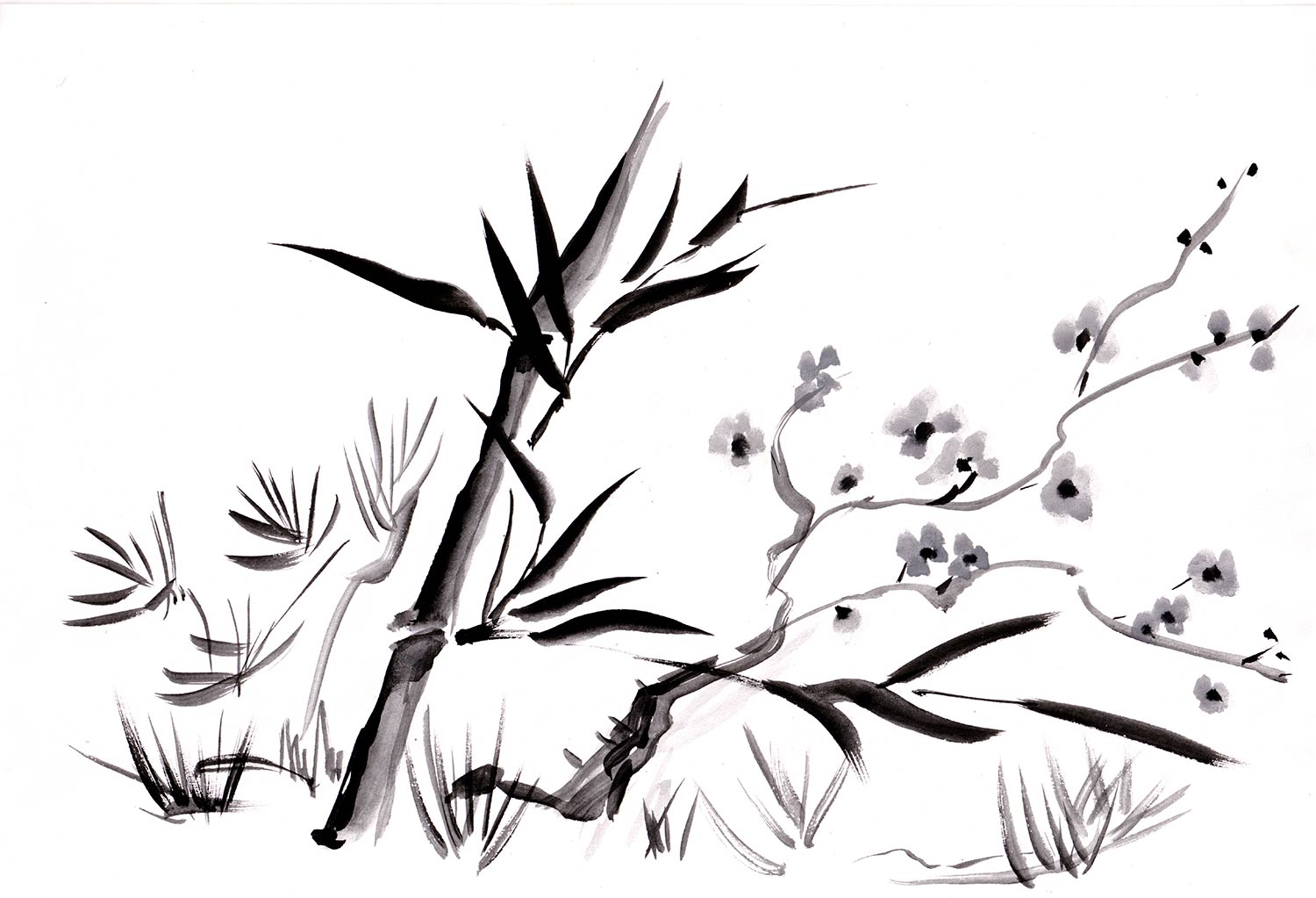

MASTER'S BOOK
SUIBOKUGA – JAPANESE ART OF INK PAINTING
Japanese ink painting
Suibokuga, or sumi-e, is a Japanese art of ink painting, recognised as one of the most important branches of painting in the Orient. Its roots go back to China of the time of the Song dynasty (960–1274), from where it came to Japan with Zen Buddhist monks. They combined the demanding and minimalist art with meditation, and treated learning how to use monochrome ink as an exercise to enhance imagination, discipline and persistence.
Characteristics of suibokuga
The most characteristic attribute of suibokuga (Japanese: 水墨画 – picture painted with water and ink) is monochromaticity, which is where all the technical requirements of the Japanese art stem from. Modelling precise shapes, chiaroscuro, perspective and depth using just one colour requires profound awareness of every brush stroke. Suibokuga teaches how to eliminate unnecessary elements and how to effectively use the whiteness of the foundation. Just as in calligraphy, great attention is paid to minimalistic brush strokes and the amount of ink used, with the image coming out due to the strength and firmness of lines.
Equipment of a suibokuga master
Faithful suibokuga students use pressed ink cubes (originally obtained from the sooth of burnt plants), which is mixed with water on a special stone until liquid consistency is obtained. It is applied on rice paper or silk using pointed brushes made of animal hair, similar to those intended for calligraphy. In the past, Japanese masters used bamboo sticks or rice straw.
The art of precision
The minimalism of suibokuga applies not only to the brush movements or to ink but also to paper, so each brush stroke must be precise and has a purpose. Unlike Western artists, the Japanese do not make draft sketches of their works, and the first version is always the last one. Once the brush touches the paper, there is no turning back – the ink cannot be erased with rubber or solvent. To avoid mistakes, masters of the Japanese art developed an advanced system of brush motions and strokes. Young suibokuga students practise them for years, meditating over the sketches of bamboo branches or orchid flowers. For instance, distinct lines, with thickness adjusted through the pressure of the brush, can be obtained with vertical motions (choku-hitsu), while more delicate, more “washed” forms emerge as a result of soku-hitsu, that is side strokes. These terms do not apply to the direction of brush motion on the foundation but to the inclination of the brush, which is crucial for the intended effect.
The most popular motifs and the spiritual significance of suibokuga Japanese graphic art usually features classic plant and animal motifs or landscapes, as painting them was treated by Buddhist monks as a form of communing with nature. Young students of monochromatic art still practise by painting the tiny details of bamboo branches to later be able to capture on paper landscapes and portraits of brave Japanese samurai. Finishing touches often include putting passages from poems, dicta and topics for meditation on the works, which emphasises the spiritual nature of Japanese art even further. After all, Japanese painting was pioneered by Buddhist monks, whose calligraphy was a form of achieving nirvana and who began the work on every painting with deep meditation.
Japanese monochromatic painting
The precision and modesty of forms characterising the mystical art that used to be practised by aristocrats and samurai invokes rupture even today. Black and white works decorate the walls of travellers fascinated with the Orient and they inspire Western artists who gamely try to achieve the precision of movements as well as the composure and inner peace the Japanese masters believe are indispensable for artistic perfection.























